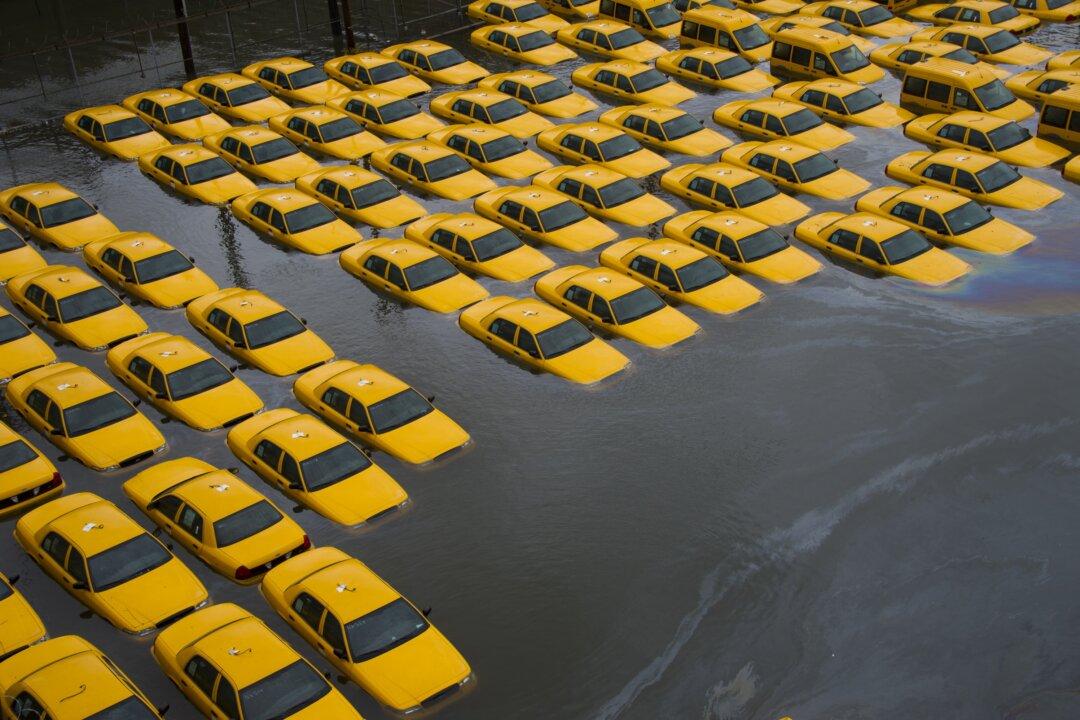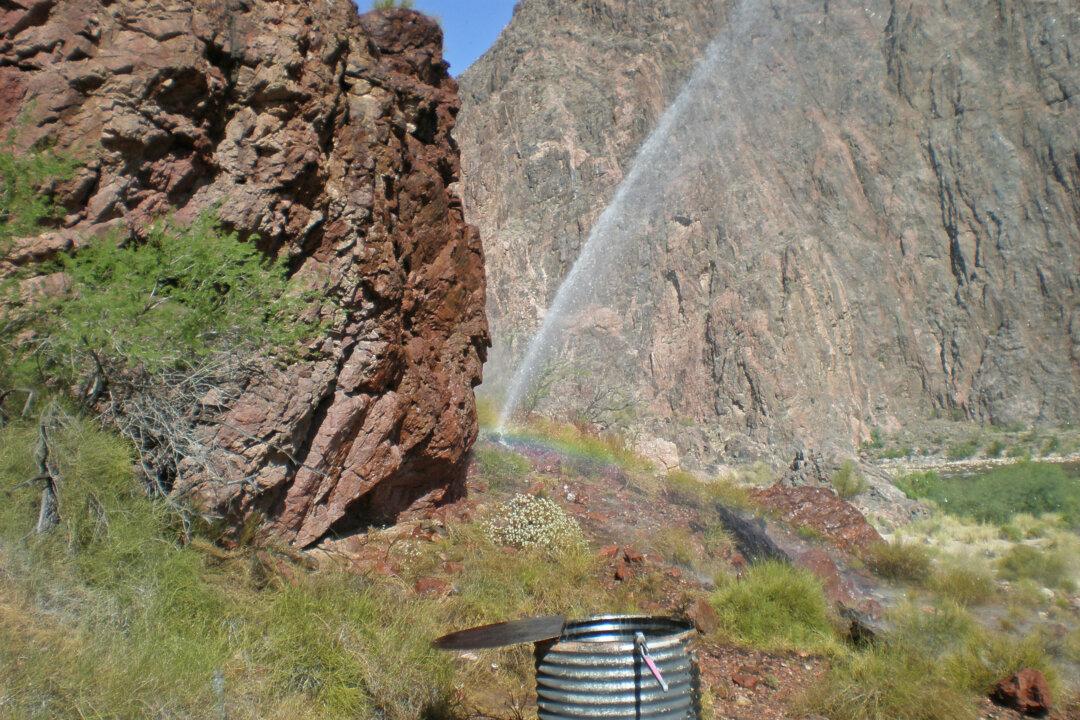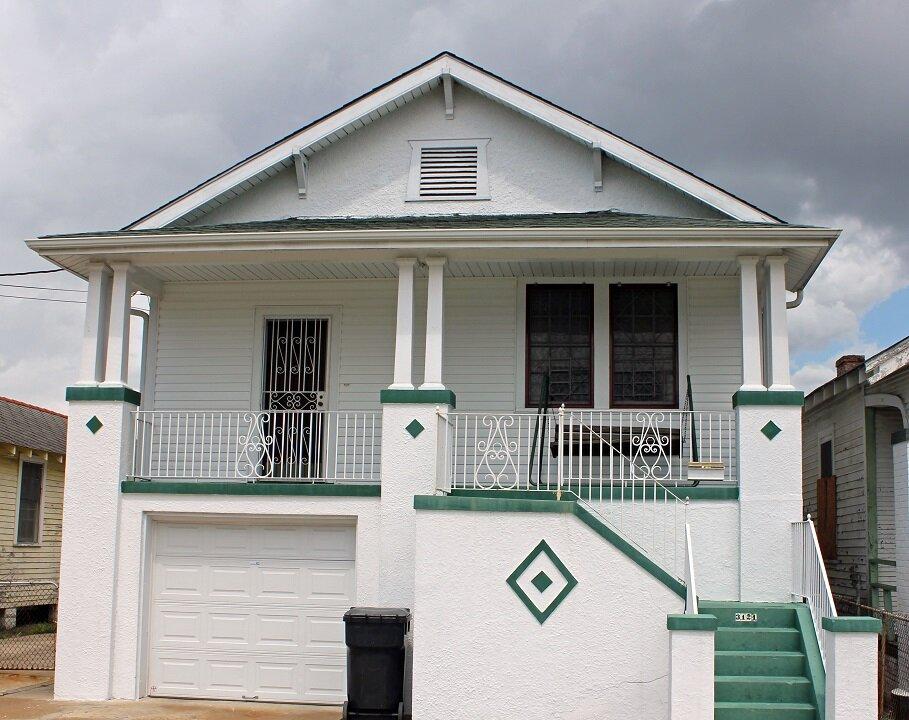NEW YORK—As residents of the city’s low-lying areas packed their bags in late October 2012, many felt they would be back in their homes in a few days. Evacuating had become an all too familiar drill for flood Zone A residents, who had fled to higher ground when Hurricane Irene had hit New York in August 2011.
The city had walked away largely unscathed from Irene’s wrath, leaving residents less eager to pick up and leave again as Superstorm Sandy barreled up the East Coast, heading straight for the city. Reporters, weather forecasters, and city officials all took to the airwaves pleading this would be a different storm and warning New Yorkers to take evacuation orders seriously.
“The most important thing I can say right now is, if you live in Zone A, you must evacuate,” Mayor Michael Bloomberg said at an Oct. 28, 2012 press conference at Seward Park High School, which was doubling as an evacuation shelter.
“I can’t stress enough that this is for your own safety, and that if you refuse to evacuate, you’re not only putting yourself at risk, but also the first responders who will have to assist you in an emergency.”
With a few days notice, the mayor used everything he had at his disposal to prepare for the storm, nicknamed “Frankenstorm” not only for its timing (just days before Halloween), but because it would see a powerful cold front meet a powerful hurricane—and all at the month’s highest possible tide.
The city opened 76 evacuation shelters, using mostly schools, with rows of cots set up in gyms. There were no cribs for babies, but crates were provided for people who brought their pets.
The subway system closed, the entrances boarded up and protected by sandbags. The Metropolitan Transit Authority (MTA) inflated water bladders 5 feet tall in an attempt to protect the train tubes.
“This design is specifically for what’s called ‘the storm of the century,” Sam Zambuto, MTA spokesman, told Epoch Times on Oct. 28, 2012. He said the grates on the ground would be able to handle large volumes of water, and that the bladders would be more than enough to handle the incoming water.
Students were told to stay home from schools. The Stock Market was closed to traders. Extra staff was placed at 911 and 311 to field calls from those in need, and more police and firemen were put on duty.
Businesses boarded up their windows, and some drew notes on the wood: “Go away Sandy!”
By early evening on Oct. 29, 2012, with nearly all its residents hunkering down either in shelters or their homes, the brunt of the storm finally hit New York City.
Despite all the preparation, nothing short of an impenetrable barricade would have stopped the 14-foot wall of water. For roughly four hours, the city’s streets and buildings took on levels of water not seen in modern times, bringing America’s most iconic city to its knees.
It was like a transformer exploding. ... It was the ocean taking the metal door off the hinges in the basement. - Deirdre Young-McGrath, resident, Staten Island
Meeting the Unexpected
There were two types of people that night the storm hit: those who stayed, and those who didn’t. While nearly everyone’s experience was different, those who chose to ride out the storm in the city’s hardest hit areas will never forget the horror of watching the water rushing in to the places they called home.
George Biaggini and his family had been listening to the news all day Monday and knew that there was going to be flooding. He, like the majority of his neighbors on Rockaway Beach 145 Street in Queens, stayed on to see the storm through. By that evening, the water started coming in his ranch-style house and he was left figuring out how to get his wife and 5-year-old daughter out safely.
“The back door blew open and the water came in,” recalled Biaggini. “The surge was heavy.”
From there they went to the house of a 75-year-old neighbor, where the water eventually became neck-deep. Biaggini had to pick up his child and carry her above his head to get her out to safety.
“My belly came in handy because it kept me grounded,” said Biaggini, who has a slightly portly build. “At one point I almost slipped and my daughter said ‘Uh oh Daddy!’”
They spent the night in a neighbor’s house, but Biaggini could not rest, knowing what was happening outside.
“That night I couldn’t sleep,” he recalled. “At 4 o’clock in the morning I looked out and you just think, ‘This is a movie, it’s a lake out there.’”
Lower Manhattan
Meanwhile, Todd Salley, superintendent of the Westbeth Artists’ Housing in the West Village, kept watch in the basement of the building, which housed 70 artists’ studios.
As Salley and the others with him were searching for any remaining artists in one of the labyrinth hallways of the cave-like studios, he began to hear loud popping sounds.
“It sounded like explosions,” said Salley, recalling the night. “It was the walls being broken out [by the water]. We ran.”
Salley, who cannot swim, said he was “terrified” as he watched water fill the elevator shaft up to the first floor of the building within five minutes.
Staten Island
In New Dorp Beach on Staten Island, Deirdre Young-McGrath, along with her husband and daughter, had bought a generator and supplies to ride out the storm.
Young-McGrath drove her car as the wind picked up to help her daughter, who was driving behind, get on the main road to go to work. When Young-McGrath turned around to return home, she realized how high the water was getting.
Upon her return home, the water was ankle deep on the streets. She made her way to the basement to find it dry. She then went upstairs to investigate a dripping noise. When she got upstairs, she heard a loud bang.
“It was like a transformer exploding,” Young-McGrath said. “It was the ocean taking the metal door off the hinges in the basement.”
Panic ensued and Young-McGrath ran upstairs and packed her bag with a T-shirt and medicine for her husband.
Her husband drove off first with the family dog. Young-McGrath left after she tried to convince her neighbors across the street to evacuate. The neighbors had too many people and pets to be able to leave.
Coney Island
In a housing project on Coney Island, Vincent Rodriguez was one of the few who did not evacuate, choosing to board up his windows and ride out the storm instead. In the middle of the night, Rodriguez awoke to assess the situation.
“I went down to the second floor and the lobby was completely under water,” Rodriguez said. “I saw the ocean pouring in to the streets, people panicking, trying to park their cars. Just chaos.”
Fireman scrambled to rescue those who had not heeded the mayor’s warning earlier in the day. Some were lucky. Others were not. There were 43 deaths in New York City attributed to Sandy, almost all of which were by drowning.
The Storm Continues
Water poured over the seawall near 14th Street on the East Side, breaching a 12-foot wall, causing a Con Edison power station to explode, leaving nearly all of Lower Manhattan in the dark.
Late in the evening, rising seawater breached the electrical system at 173 Ocean Ave. in Breezy Point, Queens, starting a fire in the home. With the storm surge nearing its peak, fire fighters were unable to respond. Fueled by high winds, the flames jumped from house to house for roughly 10 hours, leaving 126 homes destroyed and 22 others damaged.
Some of the homes belonged to firefighters and policemen who were on duty to protect the city. The following morning as the mayor surveyed the site, he said it looked like a war zone. The images would be some of the most iconic from the storm.
Additional reporting by Genevieve Belmaker, Ivan Pentchoukov, and Petr Svab





